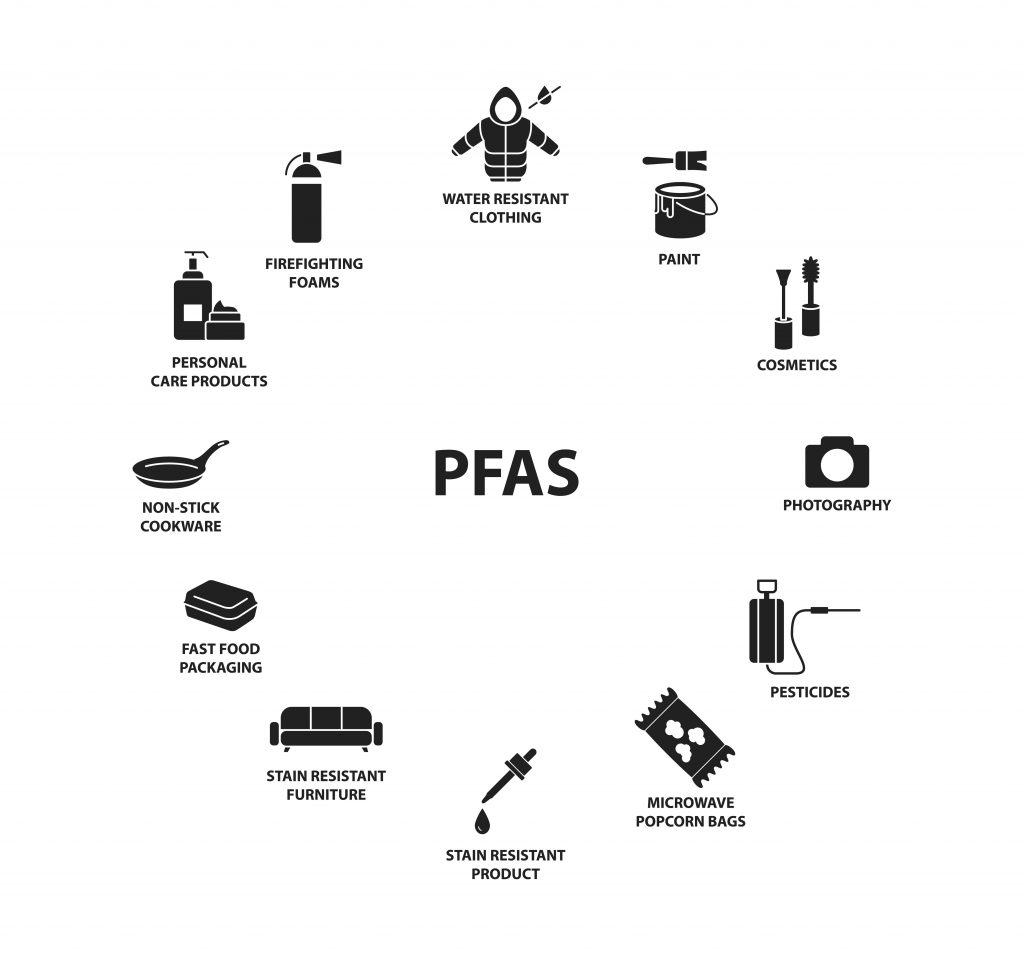Written by Lorena La Osa Gomez, Senior Project Manager, Environmental Due Diligence, Pinchin Ltd.
What are Per- and Polyfluoroalkyl Substances (PFAS)?
Per- and polyfluoroalkyl substances (PFAS) are a collection of over 4700 man-made chemical compounds that contain carbon-fluorine bonds, one of the strongest chemical bonds in organic chemistry. PFAS compounds have been renowned for being flame-resistant and “slippery”, thus their use in fire-fighting foams, flame-retardant fabrics and non-stick pans, among other things. PFAS are also used as surfactants, lubricants, repellents and can be found in industrial effluents and wastewater, landfills, packaging materials, and other consumer products (e.g., cosmetics). They are highly persistent in the environment and will accumulate in the human body because they do not break down readily. These compounds are found in the environment at low concentrations around the world.
Perfluorooctanoic acid (PFOA) and perfluorooctane sulfonate (PFOS)

Until recently, Perfluorooctanoic acid (PFOA) and perfluorooctane sulfonate (PFOS) were the most extensively produced PFAS compounds for commercial purposes. Guidelines for PFOS in soil and PFOS and PFOA in groundwater have been recently released by the Alberta Environment and Protected Areas (formerly Alberta Environment and Parks) for the first time. From a PFOS in soil perspective, the most restrictive criterion is applied to natural areas and agricultural land uses. This is driven by the desire to protect ecological receptors (livestock/wildlife) from exposure via contaminated soil and food ingestion. The criterion is less restrictive for the rest of land uses (residential/parkland, commercial and industrial), which is driven by the need to protect domestic use aquifers from contamination and subsequent impact to human health. Groundwater criteria for both PFOS and PFOA are driven by the potable water exposure pathway and are the same as those published in the Guidelines for Canadian Drinking Water Quality (currently being updated). As the toxicological effects of PFOA and PFOS are considered additive, the sum of the ratios of the PFOA and PFOS concentrations to their respective criteria should not exceed 1.
Pinchin works with Canadian laboratories which are equipped to perform analytical testing and assist in identifying the specific types of PFAS compounds in environmental samples. Sampling environmental media for PFAS compounds is complicated in that these agents are likely to be found everywhere at low concentrations and rather problematically are present in many commercial products (e.g., markers, waterproof clothing, teflon equipment, cleaning supplies) that might cross-contaminate samples during an environmental sampling program. Pinchin is experienced in the sampling of environmental media for PFAS compounds and risk assessment of contaminated sites where they are found.
For more information about PFAS or Pinchin’s Environmental Due Diligence services, contact your local pinchin office or call us at 1.855.PINCHIN (746.2446).